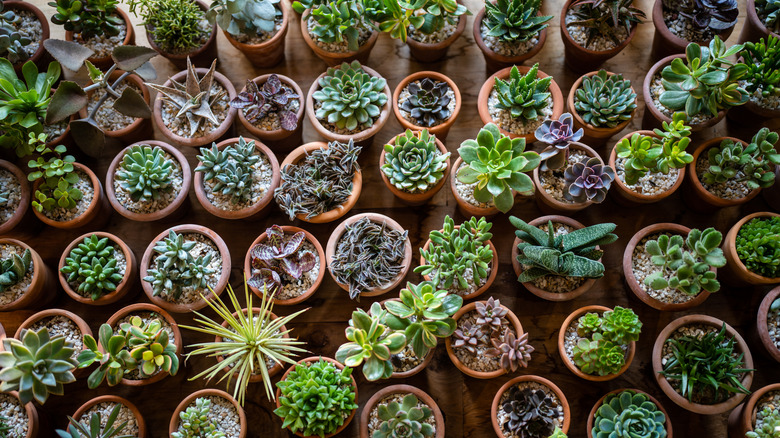The Blooming Table DIY That Plants And Guests Love
When you want to breathe new life into your home decor and fuse nature into your design, dip into your DIY skills and create a unique piece of furniture that people will talk about for days. A blooming table is more than just furniture. Depending on the table you use, it can be a stunning way to enhance your dining experience or repurpose something that's either old or outdated and in desperate need of a dynamic makeover. This living table can create a serene environment with succulents or other low-maintenance plants while impressing your guests with a one-of-a-kind conversation starter.
A blooming table is a functional tabletop with a built-in planter that helps plants thrive. Unlike terrarium tables that enclose plants, a blooming table keeps plants in an open space under a glass or a cutout top. Perfect for indoor or outdoor tables, this creative design transforms ordinary tables into a living work of art.
Professional tables made exclusively for plants can be pricey and don't look as sturdy or posh as their price tags suggest. But making your own is relatively simple and customizable, and best of all, it's way more budget-friendly, with minimal supplies. When you don't have a table in your stash, check local thrift shops or garage sales.
One tip — stick to plants that have the same care instructions, like similar watering requirements, light levels, and soil types, for example. Growing plants that need the exact same thing will make caring for them so much easier.
Making a DIY blooming table
Design the blooming table of your dreams by finding a glass-top table to be the base of your project. Starting with a wire mesh sheet for a sturdy but flexible surface to hold the plants. Secure the metal sheet to the bottom of the table with screws, making sure it's taut so it won't droop. Next, paint the table and screen if you want to change up its look.
Grab wood dowels — or unfinished table legs — for raising and propping up the glass so that the plants have space between the mesh and the glass top. You'll likely need at least four, but it depends on the size and shape of your table. You can also paint the dowels or cut them down if needed. Arrange the dowels on top of the mesh so they provide the most support for your glass top. Each one has a bolt that can be secured by attaching a nut to each bolt. Next, cover the mesh with gravel, then soil, and incorporate your plants. Don't forget to water your blooming table before putting the glass top back on. And that's it — you're done.
The key to a successful blooming table is to keep plants as simple as possible. Options like fast-growing succulents or even ones that bloom with pretty red flowers require very little maintenance. We like to include a few herbs, which thrive with an occasional mist and lower light, for a fresh cooking ingredient. For those who prefer an even easier option, faux plants and preserved moss, make your indoor garden look green and lush without any of the upkeep.
